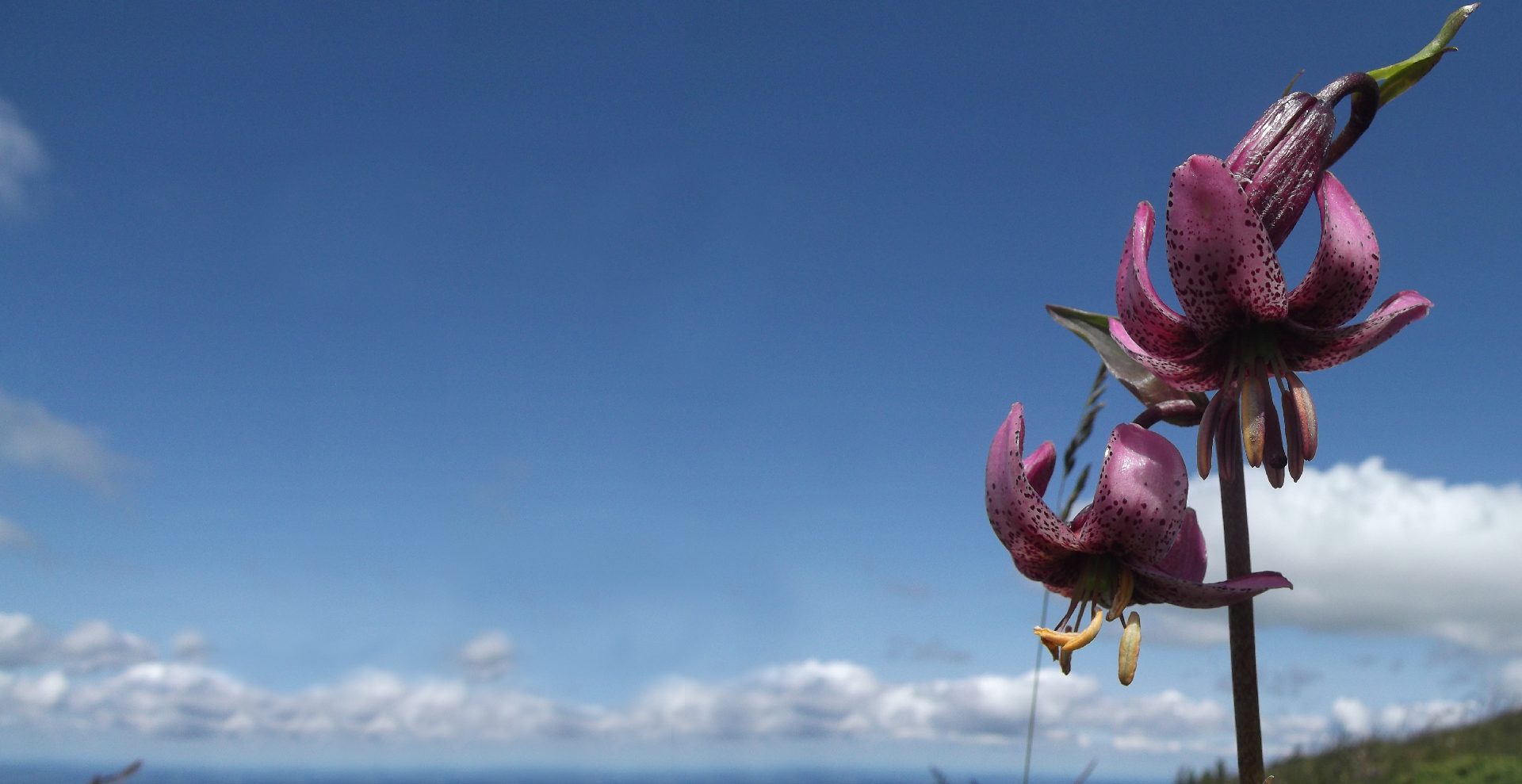 [:fr]Lis martagon[:en]Martagon Lily[:]
[:fr]Lis martagon[:en]Martagon Lily[:][:fr]Ce grand lis est emblématique du massif jurassien. Il pousse dans les prairies, les broussailles et les alpages. L'espèce, bien que ponctuellement très présente, reste rare. Elle est d'ailleurs protégée et soumise à réglementation dans les régions et départements où elle est présente.[:en]This large lily is symbolic of the Jura Massif. It grows in the meadows, the scrub and the alpine pastures. This species while found sporadically, is still considered a rarity; thus it is protected and subject to the regulations of the regions and departments where it grows (Photo credits: RNNHCJ).[:]
Flora
It was the exceptional diversity of the flora which first caught the attention of naturalists. The High Jura offers a unique panorama across the city of Geneva and the lake Leman basin, to the Alps opposite. Ease of access makes it a perfect field of study.
From the 16th century and particularly during the Enlightenment, British and Swiss botanists, long before others, strode the peaks and described several of the treasures of the Jura – Alpine Eryngo, Mountain Avens, Lady’s Slipper Orchid, Bartling’s Broomrape and St. Bruno’s Lily. Certain botanists, such as the Scot Thomas Blaikie or the Bernese Albrecht Von Haller used their observational expertise to develop methods of analysis and classification.
During the 1960s the Reculet-Crêt de la Neige sector was the backdrop for classification work by local botanists from the Pays de Gex: Professor Piquet, Doctors Moreau and Corcelle. The plant associations drawn up in 1972 by Claude Béguin are especially rich and varied, such as those of the False Helleborine and Thistle, the grasslands of the Yellow Bellflower, and those of Sesleria and Sermountain.
Among the 1,466 plants inventoried in the Reserve, 150 are of exceptional importance, of which 85 are listed as protected on a local level and 6 are protected at the national level.

